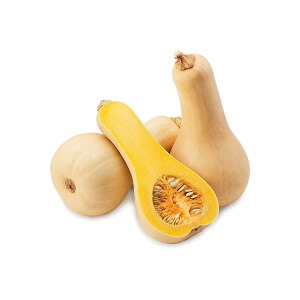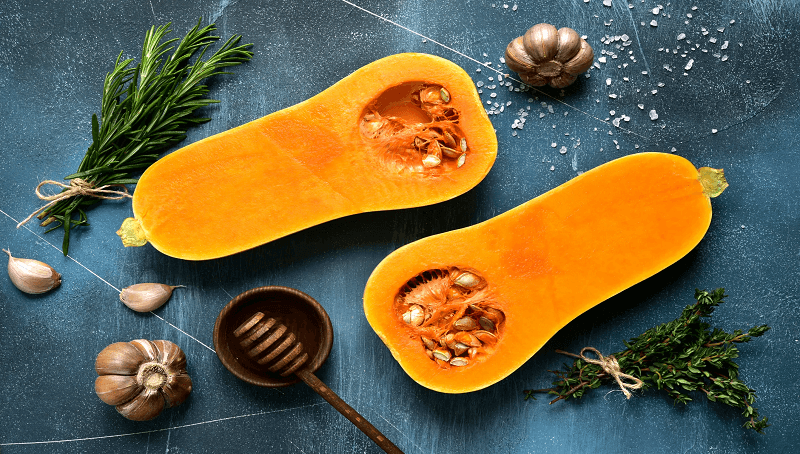There are a few different recipes calling for the usage of butternut squash but a lot of people have a really hard time figuring out how much squash to purchase, especially if they are newbies. For example, some recipes of soup will call for mashed squash, while others will require either two cups of cooked or three cups of prepared cubes of squash. So how much does a whole butternut squash weigh? And what should you be looking for when shopping for this ingredient at the market?
As usual, we took it upon ourselves to find out exactly how many butternut squashes someone would need for three cups of prepared raw cubes. We went to the produce section of the closest grocery store and started shopping. If you don’t know what to look for when shopping, you should know that butternut squash has a bell or vase shape, with beige skin that isn’t edible.
You might also like to read our articles on the weight of cabbage, corn, or sweet potatoes.
The flesh is dark orange with a very sweet, almost nutty flavor, that people would compare to sweet potatoes. Most squashes will have a size of anywhere between one and five pounds and will measure anywhere between 3 and 7 inches, although bigger ones, as well as smaller ones, have been seen. Most markets will sell squashes of 2 to 3 pounds in weight.
Keep in mind that you will get about 2 to 3 ounces less in weight after you remove any peel or seeds and are only left with the edible portion. For our test, we used a 3-pound squash, which we turned into 4,5 cups of 1-inch, uncooked cubes. This means that you should expect each cup of cubed raw butternut squash to weigh around ⅔ pounds. When it comes to soft-cooked cubes, a cup of these cubes will usually be made from two cups of raw butternut squash cubes.
The information above should be enough for you to know exactly how much butternut squash you will need regardless of whether you need it raw, cooked, or in any other form. If you feel like this information isn’t enough, then you can make use of our conversion tool below, which would convert different types of butternut squash.
Custom Conversions for Butternut Squash
How Should You Store Butternut Squash
General information on winter squash
The following vegetables are usually included in the winter squash category: Spaghetti, Hubbard, Gold Nugget, Fairytale Pumpkin, Delicata (Peanut), Carnival, Buttercup, Butternut, Banana, Autumn Cup, Amber Cup, Acorn, Kabocha, Sweet dumpling, and Turban squashes.
Information on how you should store butternut squash
You should always go for squashes that seem to be very heavy for their size, with thick and hard shells. Any soft spots, cuts, or signs of decay on the shells should make you pass the squash.
Storing your butternut squash for shorter periods of time
 You should cure your Butternut squash at a room temperature of around 70°F (21.1°C) and it should keep for anywhere between 10 to 20 days.
You should cure your Butternut squash at a room temperature of around 70°F (21.1°C) and it should keep for anywhere between 10 to 20 days.
When you’re done curing it, move it to a cooler and drier place with a temperature of 45 to 50°F (7.2 to 10°C). The garage or the basement will be great for longer-term storage. You should expect the butternut to last for a shorter period of time than other squashes, especially because of its thin skin. While other squashes can last for anywhere between 3 and 6 months, the butternut will only last for 1.
You can also refrigerate your cut squash pieces in an airtight plastic container to make them last for around 5 days. You can also keep your cooked squash in the refrigerator for a maximum of seven days.
Storing the butternut squash for a longer period of time
You should always remove the peel and seeds then wash and cut the vegetable into smaller pieces before freezing your winter squash. You will then have to cook it until it gets to a softer consistency and either put it through a sieve or mash pulp. The last step will be to place it in an airtight freezer container while leaving it with half an inch of head space and freeze it to 0°F (-17.8°C). If you follow these steps properly winter squash should keep for around one year.
